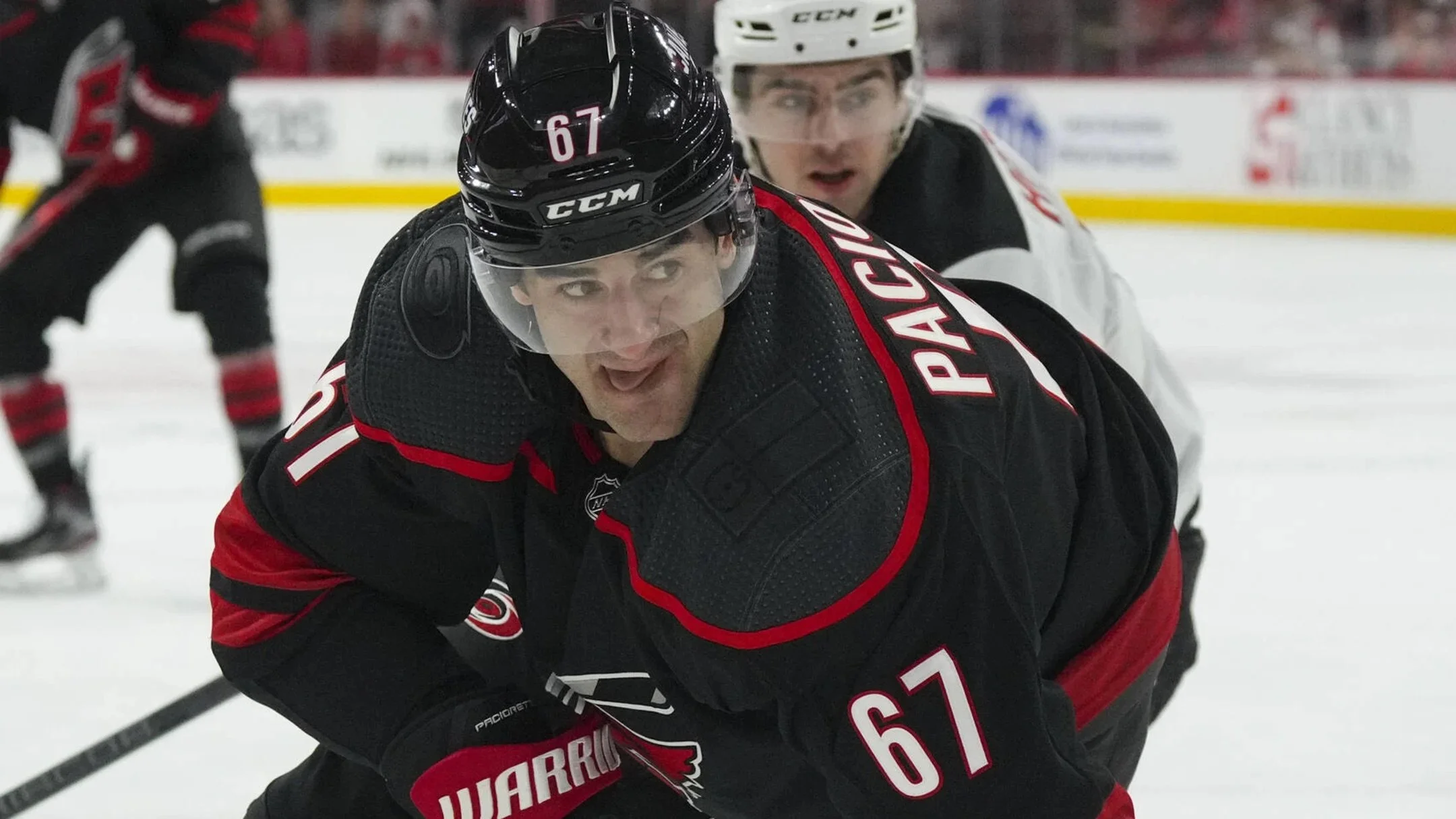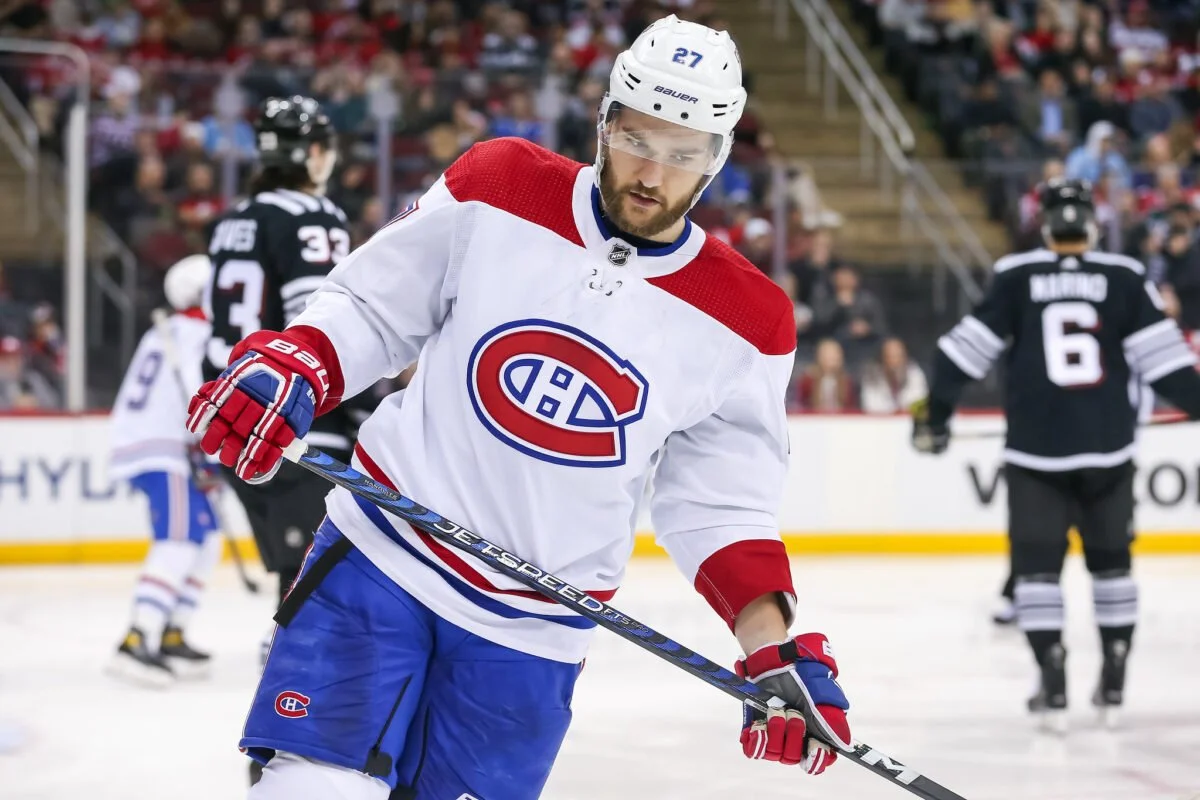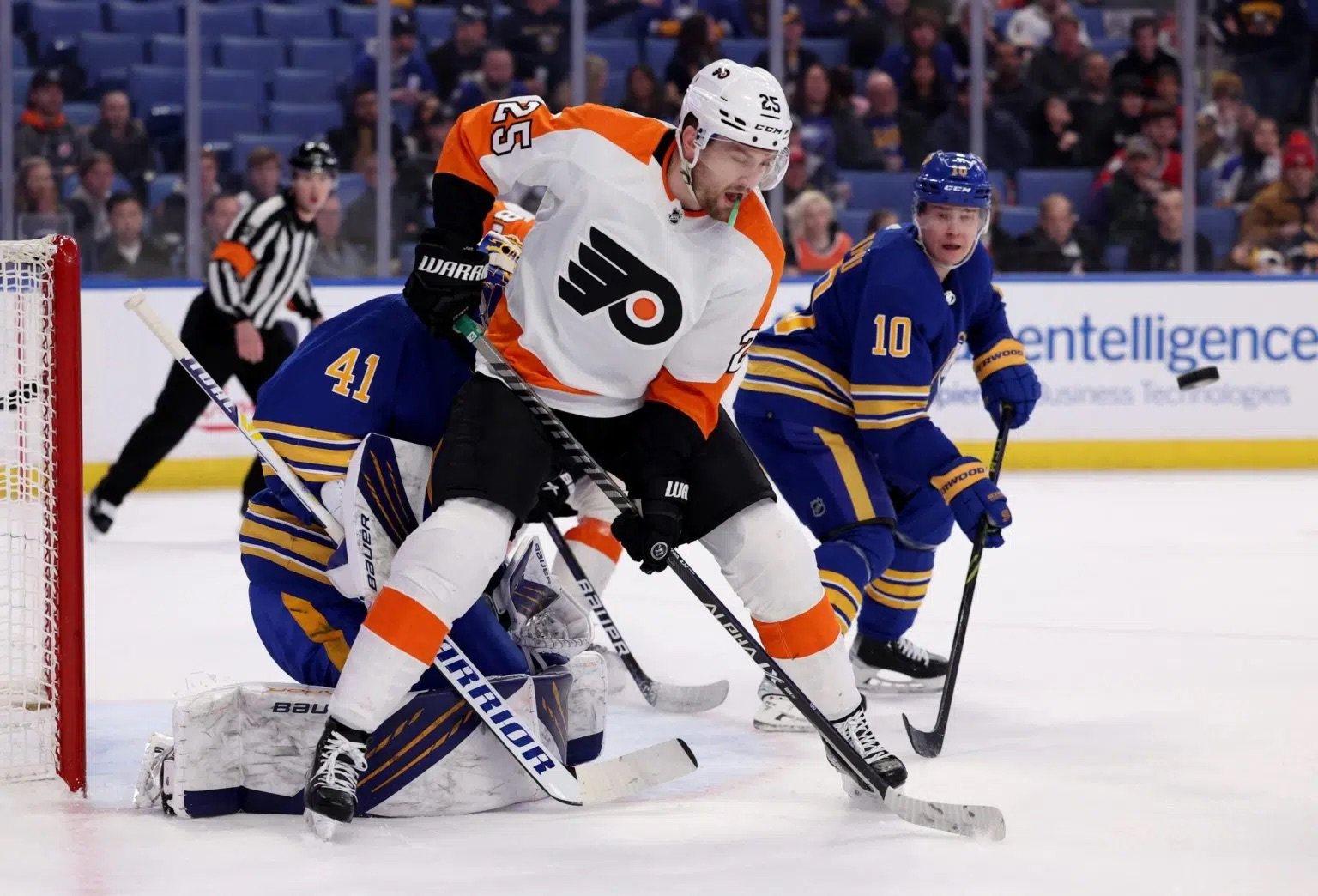Depth Forward Options the Penguins Should Consider Signing in Free Agency
James Guillory/USA TODAY Sports
PITTSBURGH - If there’s anything we learned from this year’s Stanley Cup Playoffs, it’s that depth reigns supreme. A team that can beat you with any of their four forward lines, three defensive pairs, or any goalie in their organization is a team that will survive the four-round gauntlet that is the Stanley Cup Playoffs. The Vegas Golden Knights won the Stanley Cup with their fourth-highest-paid goaltender in the organization playing the majority of their playoff games, while their fifth-highest-paid goaltender was an All-Star and would’ve been a Calder Trophy finalist if it weren’t for injuries.
The Golden Knights had an absurdly deep roster this season, and the Penguins did not. The Penguins' goal spread between their top-six forwards and their bottom-six forwards was staggering. Kyle Dubas’ job this offseason, to make the Penguins contenders again, starts with deepening the roster so the team doesn’t need to strictly rely on six players for goal production.
The bottom six were given infected duct tape at the trade deadline, instead of the ace bandage it so desperately needed. Ron Hextall shipped out Kasperi Kapanen on waivers, just six months removed from signing him to a two-year contract worth $3.2 million annually. Hextall would also remove Teddy Blueger and Brock McGinn from the roster while bringing in Mikael Granlund and Nick Bonino.
Hextall presumedly expected an offensive jolt in the bottom six by sending a second-round pick for Granlund. Granlund did no such thing in Pittsburgh, and is the Penguins' top buy-out candidate, as the window to do so opened up following the Stanley Cup being awarded last week.
Through his experience building good depth groups around his core in Toronto, I expect Kyle Dubas to do a much better job this offseason building the depth of the organization at all positions and all levels. For the sake of this article, I will look at some of the forwards available on July 1 during the NHL’s Free Agent Frenzy, whom I believe would be realistic fit with Pittsburgh. I won’t include Jason Zucker on this list, as I believe he will already have been re-signed by the team by the time he would become a free agent on July 1. I will use contract projections made courtesy of the AFP.
Analytics via Daily Faceoff.
LW Max Pacioretty, 34
Projected Contract: 1 year x $1.5 million AAV
Pacioretty is currently recovering from his second consecutive Achilles tear. The Carolina Hurricanes acquired him for nothing more than his cap hit from Vegas last off-season. Due to the awful injury luck, he’s had over the last year, he only skated in five games for the Hurricanes, scoring three goals. He averages roughly 60 points over an 82-game pace throughout his career. The former Canadiens captain has scored 30 goals in six separate seasons.
He’s 34 years old and will likely get a one-year “prove it” deal this offseason. I think the market for him could be competitive since he likely won’t be asking for much money, therefore, I could see him making over the projected $1.5 million. That being said, I think any team that gets him would be getting themselves a steal.
He is expected to return sometime around October/November, so he may miss some time early in the season. It’s certainly a gamble to make, given his health, but I think Pacioretty at such a low salary is too good to pass up for the Penguins, and he immediately becomes one of their best-scoring threats. I could conceivably see him and Zucker rotating between second and third-line left wing, depending on the situation, and Pacioretty becoming the massive scoring threat in the second power-play unit as needed. If Zucker doesn’t re-sign, I think the chances of this happening go up. In my opinion, a full-time, top-six role-playing alongside Evgeni Malkin would be hard to pass up for the American-born winger.
Claus Andersen/Getty Images
C Alex Kerfoot, 28
Projected Contract: 4 years x $3.5 million AAV
Kyle Dubas acquired Alex Kerfoot in Toronto as a part of the Nazem Kadri/Tyson Barrie trade with the Colorado Avalanche. Kerfoot is someone that Dubas trusts and values highly.
He’s only scored 50 points once, however, he is just one season removed from that campaign in 2021-22. He put up respectable numbers during his four seasons at Harvard University, where he served as captain during his senior year. Ideally, he’s a versatile option for the middle-six, playing more time on the third line than the second. He plays all three forward positions and can play on both special teams' units: power play and penalty kill.
Dubas thought enough of Kerfoot to artificially protect him in the Seattle Kraken expansion draft by acquiring Jared McCann as bait. Dubas had numerous opportunities to offload Kerfoot and his $3.5 million cap hit but chose to hold onto him. He is versatile, but to me, is more like a jack of all trades, master of none, which certainly isn’t too inspiring.
His projected contract is identical to his last deal, also signed by Dubas. I would be cautious about giving a player of Kerfoot’s caliber four years of term on a deal. Players in that tier, in my opinion, shouldn’t surpass two to three years of the term. It gives the player a little bit of security, while also giving the team flexibility to move them if needed. A four-year deal becomes difficult to trade, regardless of money, from the moment it’s signed until at least a year or two in.
Jess Starr/The Hockey Writers
C jonathan Drouin, 28
Projected Contract: 1 year x $2 million AAV
Picked third overall in the 2013 NHL Draft, another option for Dubas is Jonathan Drouin. Drouin was drafted a decade ago after two consecutive two-points-per-game seasons with the Halifax Mooseheads. His tenure in the QMJHL capped off with the franchise's first Memorial Cup in franchise history. Alongside eventual first-overall pick Nathan MacKinnon, that Mooseheads team was dominant offensively.
Drouin never really reached his potential in the NHL. His career high in points is 53, which he reached twice. He hasn’t had a bad career whatsoever, he just hasn’t reached the heights expected of him following an elite junior career. Also, he was dealt from the Tampa Bay Lightning just three years into his career to Montreal for defenseman Mikhail Sergachev, who has been a cornerstone of the Lightning during their three consecutive trips to the Finals, winning two cups.
Drouin does not need to be “Mooseheads Drouin” in Pittsburgh. I could see him fitting in as a good third-line forward. He can play both left wing and center, making him a versatile, appealing option for Dubas, similar to Kerfoot. Also, like Pacioretty, he’d make a great option on the second power-play unit.
He doesn’t have a ton of playoff experience, but excluding his rookie season with the Lightning, Drouin has 21 points in 27 playoff games. That point pace is better than his regular season point pace. Like a lot of these options, it’s a low-risk, high-reward signing Dubas could make to help offensively bolster the bottom six.
Timothy T. Ludwig/USA TODAY Sports
LW James Van Riemsdyk, 34
Projected Contract: 1 year x $1.8 million AAV
JVR has spent most of his career with the rival Philadelphia Flyers. He had a six-season break in-between being drafted by the Flyers and signing with them as a free agent in 2018-19, where he was a Toronto Maple Leaf. For most of that time in Toronto, Kyle Dubas was the Assistant General Manager, so there is some familiarity there.
JVR is a great left-wing net-front presence, who has had some great offensive production throughout his career. Although there are some signs of decline, the 34-year-old has seven 20-goal campaigns under his belt. He is only one season removed from his most previous one, when he scored 24 goals in the 2021-22 season with a terrible Flyers team around him.
Standing 6’3”, he would immediately become one of the biggest forwards on the team. He would be a great option for the second power-play unit net-front position, being able to jam home rebounds. He doesn’t have the legs he once had, although he was never the fastest skater, he still has a good shot and great awareness to get into the areas needed to score big-time goals.
With his age, I wouldn’t offer anything beyond a one-year deal. Like Pacioretty, because of age, this is a little more of a risk than Kerfoot or Drouin, but I don’t think any of these players are options the Penguins would instantly regret signing.
Nick Turchiaro/USA TODAY Sports
C David Kampf, 28
Projected Contract: 2 years x $1.8 million AAV
I went in a different direction for this last one. Yes, my main point with this exercise was to find bottom-six forwards to produce offensively, but not every forward needs to be a scorer. Teams need at least a few of their forwards to also play on the penalty kill and take defensive-zone starts, and this guy can absolutely do that.
Kampf was brought over to Toronto by Dubas as a free agent following four seasons with the Chicago Blackhawks. He became the first steady fourth-line center the team had had in many years, after cycling through many, year after year, including trading for Brian Boyle, Tomas Plekanec, and others.
Kampf filled that void for nearly every game of his two-year contract with Toronto. He is very comfortable without the puck, and would immediately become the game-in, game-out fourth-line center for the Penguins, assuming the Penguins don’t have Jeff Carter in that role next season. It is well-documented how much Kyle Dubas likes having players, coaches, and assistant managers that he has worked with before and is comfortable with. Kampf is on that list now, and I wouldn’t be the least bit shocked to see him sign in Pittsburgh and take over the void that Teddy Blueger left when he went to Vegas.
I also have a few honorable mentions that I could see Dubas pursuing to shore up his forward group. In terms of scoring bottom-six options, Evgenii Dadonov and Gus Nyquist are lesser-known options the Penguins could pursue if they miss out on the previously listed names.
For a more defensively-minded option, a name that jumps out to me is former Penguin Oskar Sundqvist. Sundqvist would be a Kampf alternative. He is another player who would be a solid, fourth-line center with penalty-killing abilities. Familiarity with the Penguins organization doesn’t hurt, either. He helped the St. Louis Blues’ bottom six when they won their first Stanley Cup back in 2019.
I will write another article later this week with my look at the free agent options on defense. Obviously, Dubas won’t sign all of these players. It’s actually more likely he signs none of them. However, I think the guys listed above would be instant improvements on the bottom-six that Mike Sullivan was forced to play this past season, and would help push Pittsburgh back into the Stanley Cup Playoffs.




